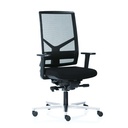ABSENTEEISM DEFINED
The non-presence of an employee at his place of work is best defined as absenteeism. When this becomes the routine rather than an exception it is better called as chronic absenteeism.
Absenteeism is one of the most significant causes of production loss and invariably leads to dissatisfaction of co-workers and colleagues who need to take on the additional burden. Thus it is not surprising that reducing absenteeism is critical from a management perspective.
COST OF ABSENTEEISM
Statistics indicate that the cost of absenteeism in the US $3,600pa per hourly employee while the cost per salaried employee is $2,650pa. One of the major drawbacks of present day management systems continues to be the inability to compute the exact cost and impact that absenteeism has on their bottom line.
REDUCING ABSENTEEISM
Absenteeism statistics indicate that three out of four are not due to illness. This makes it evident that there is more to absenteeism than falling sick. One of the most effective tools to reduce sick leave and absenteeism is to introduce a robust company attendance policy. The policy would need to be implemented as a part of the service contract making it imperative for every employee to put in the contractual number of hours of work per year. Consequently the attendance record would need to be monitored closely and repeated communication channels may have to be opened.
Thus the indications are clear that the management will not accept unreasonable absence of work and would be well within the law and the policies of the company to take the necessary steps against defaulters.
Concurrently the consequences of absenteeism would need to clearly spell out so much so that if unreasonable absence from work is observed then the necessary disciplinary action under the company code may be exercised.
MANAGEMENT INFORMATION TRACKING TOOLS REDUCE ABSENTEEISM
It is now evident that absence tracking tools are an important contributor for reducing absenteeism at work considering that they can estimate the exact cost impact that absenteeism has on their bottom line.
While the direct cost of absenteeism may be evident it is the indirect cost which is far more significant and may result from poor quality of goods and services provided and high turnover of employees.
REDUCING SICK LEAVE – THE ERGONOMIC WAY
A recent Spanish study concluded that a staggering 6.4 million people are taking time off from work every week due to musculoskeletal disorders like back pain and neck pain. Thus it is evident that inculcating good ergonomic practices and using the right ergonomic equipment like ergonomically designed chairs, desks, keyboards, mice and foot stools can help alleviate the symptoms
The key to reducing absenteeism and sick leave through ergonomics is by taking a holistic approach. Ergonomics looks at the employees and aims to adapt the environment, job design and furniture and equipment that will enable employees to optimise movement while reducing stress and the risk of musculoskeletal disorders.
Stress and back pain are the two most common reasons for a certified absence inIreland. Office workers are the second highest risk group for work related back pain. By changing the way you work and adapting the environment and equipment used you can significantly decrease both mental and physical stress on an employee. Through incorporating ergonomic changes companies have reduced absenteeism by 33%. The gains are three fold, reducing the amount of strain on the body by allowing the employee to work supported and in multiple safe working postures, by designing the job to best suit the skills and aptitude of the individual and by showing a commitment to employees that you want to ensure they are working comfortably, safely and without risk of injury, thus increasing employee morale.
Arrange a consultation with one of our ergonomic consultants today, if you need advice on how to create an ergonomic workplace for your company. 01 6110 200













